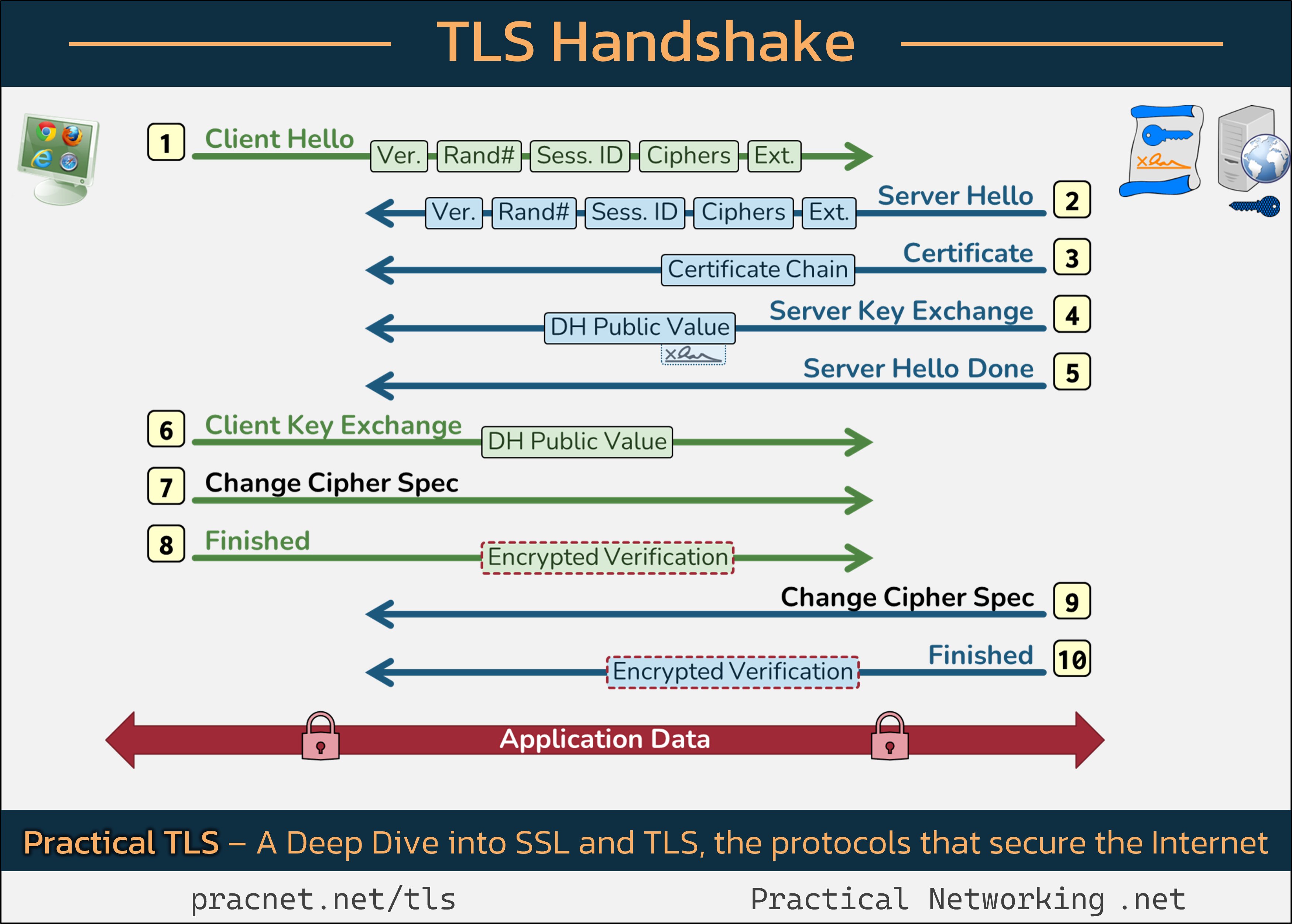Understanding the TLS Handshake: Unlocking the Secrets Behind That Coveted Padlock 🔒
In the realm of internet security, the presence of a padlock icon next to a website’s URL signifies a safe connection. However, the process that leads to this assurance is intricate and often misunderstood. Today, we’ll take a detailed look at the TLS Handshake—the series of events that transpire between your device and the server to secure your data.
To accompany our discussion, I’ve referenced a helpful infographic that outlines these processes visually. It may be beneficial to have it open in a separate tab for reference as we delve into the details.
(Image linked from a Twitter thread.)
Introduction to TLS
Before we dive into the steps of the TLS Handshake, it’s essential to grasp the primary objectives of SSL/TLS protocols:
- Authentication: Verifying the identity of the server to ensure it is who it claims to be.
- Confidentiality: Establishing session keys to secure data during transmission.
As we navigate the handshake procedure, we’ll clarify two key concepts to enhance your understanding:
Distinguishing Records from Packets
While each section of the infographic represents a “Record” exchanged during the TLS handshake, it’s important to note that these Records do not equate to Packets. A Packet can contain multiple Records, and conversely, a single Record may span multiple Packets.
Cryptographic Foundations
To appreciate the nuances of the TLS Handshake, some familiarity with basic cryptographic principles is beneficial. These include:
While we won’t delve deeply into these topics, I encourage you to explore the links for a better grasp.
With those preliminaries out of the way, let’s break down the TLS Handshake step by step.
Step 1: Client Hello
The handshake commences when your browser (the Client) sends a Client Hello message. This packet includes crucial elements such as:
- SSL Version: Specifies the highest version of SSL that
Share this content:





Thank you for sharing this detailed post on the TLS handshake process. Understanding how the handshake establishes a secure connection is essential for troubleshooting issues related to SSL/TLS protocols. If you’re experiencing problems with the padlock icon or unexpected security warnings, here are a few steps you can follow:
If after these checks the issue persists, consider consulting your